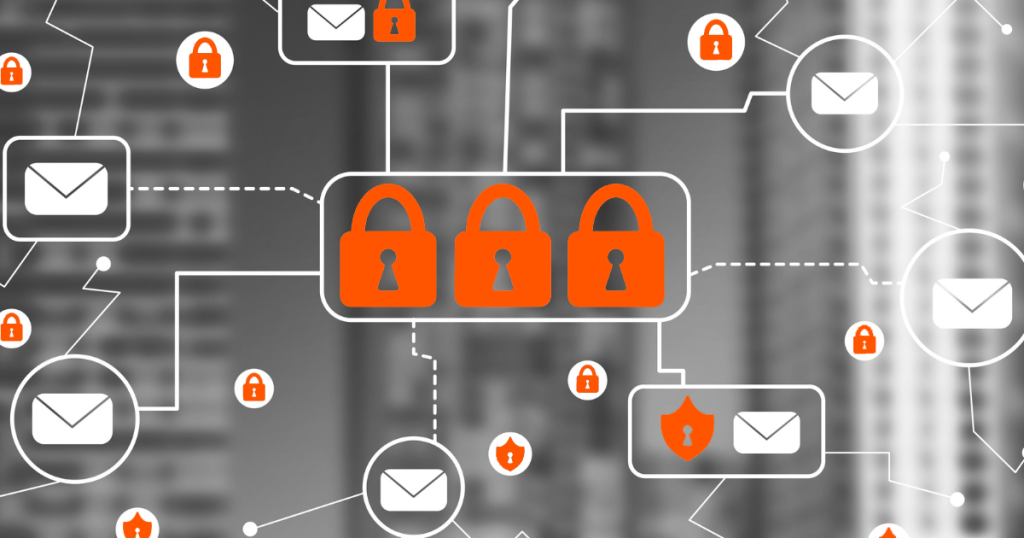In today’s digital age, email has become a crucial communication tool for businesses. It’s where you connect with clients, manage transactions, and share sensitive information. However, this reliance on email also makes it a prime target for cybercriminals. One of the most alarming threats is an email account takeover (ATO), a type of cyberattack where an unauthorized party gains access to your email account and uses it for malicious purposes.
As a small business leader, understanding the risks associated with email account takeovers and knowing how to protect your business is essential. Let’s delve into why this threat should concern you, how to detect it, and what steps you can take to prevent it.
Why You Should Be Concerned
An email account takeover can have devastating consequences for your business:
- Financial Losses: Cybercriminals often use compromised accounts to carry out fraudulent activities, such as unauthorized transfers, phishing attacks, or business email compromise (BEC) schemes. These activities can lead to significant financial losses.
- Data Breaches: ATOs can give hackers access to sensitive company data, including customer information, contracts, and intellectual property. A data breach can damage your reputation and lead to legal liabilities.
- Reputation Damage: If cybercriminals use your email account to send phishing emails or spam, it can harm your reputation. Clients and partners may lose trust in your business, thinking you’ve failed to protect their information.
- Operational Disruption: When an email account is taken over, it can disrupt daily operations. Employees may be locked out of their accounts, or hackers might use the account to send damaging communications.
How Can You Protect Yourself?
- Enable Multi-Factor Authentication (MFA): MFA adds an extra layer of security by requiring users to verify their identity through an additional step, such as a code sent to their phone or a fingerprint scan. This makes it much harder for attackers to access accounts, even if they have the password.
- Use Strong, Unique Passwords: Encourage employees to use strong, unique passwords for their email accounts. Passwords should be long, contain a mix of letters, numbers, and symbols, and should be changed regularly. Avoid using the same password across multiple accounts.
- Regularly Monitor Account Activity: Set up alerts for suspicious login attempts or changes to account settings. Regularly review account activity logs for any unusual behavior, such as logins from unfamiliar locations or devices.
- Educate Employees: Cybersecurity awareness training is crucial. Teach employees to recognize phishing attempts, avoid clicking on suspicious links, and report any unusual email activity immediately.
- Implement Email Security Solutions: Use advanced email security solutions that can detect and block phishing attempts, malware, and other threats. These tools can also help monitor for signs of an account takeover.
How Will You Know If It Happens?
Detecting an email account takeover can be challenging, but there are some key signs to watch for:
- Unusual Account Activity: Logins from unfamiliar IP addresses, changes to account settings (such as forwarding rules or password resets), or emails sent that the user did not write are red flags.
- Complaints from Contacts: If clients or partners receive strange emails from your account, such as phishing attempts or requests for money, it’s a sign that your account may have been compromised.
- Locked-Out Account: If an employee suddenly can’t access their email account, it could indicate that a cybercriminal has taken control and changed the password.
- Bounce-back Emails: Receiving an unusual number of undeliverable or bounce-back emails could indicate that someone is using your account to send spam.
What to Do If It Happens
If you suspect that an email account has been taken over, act quickly:
- Change Your Passwords Immediately: If you can still access the account, change the password immediately. If you’re locked out, use the account recovery process to regain control.
- Enable MFA If Not Already Enabled: If MFA wasn’t enabled before, now is the time to set it up.
- Alert Your IT Team: Inform your IT team or managed service provider (MSP) immediately. They can help assess the extent of the breach, secure the account, and prevent further unauthorized access.
- Notify Affected Parties: If the compromised account was used to send emails to clients or partners, inform them about the breach. This can help prevent further damage and protect your business relationships.
- Review and Revoke Access: Check for any unauthorized access to other accounts and revoke any suspicious access permissions or connected apps.
- Monitor for Further Activity: Keep a close eye on all email accounts and systems for any further signs of compromise. It may also be necessary to conduct a broader security audit to ensure no other accounts have been affected.
Prevention is Better Than Cure
Preventing an email account takeover is far easier than dealing with its aftermath. By implementing strong security measures, educating your team, and staying vigilant, you can significantly reduce the risk of an account takeover.
Remember, cybersecurity is not just an IT issue; it’s a critical business priority. Protecting your email accounts is a fundamental step in safeguarding your business’s financial health, reputation, and operational integrity.
Stay proactive, stay secure, and keep your business safe from the ever-evolving threats in the digital world.
